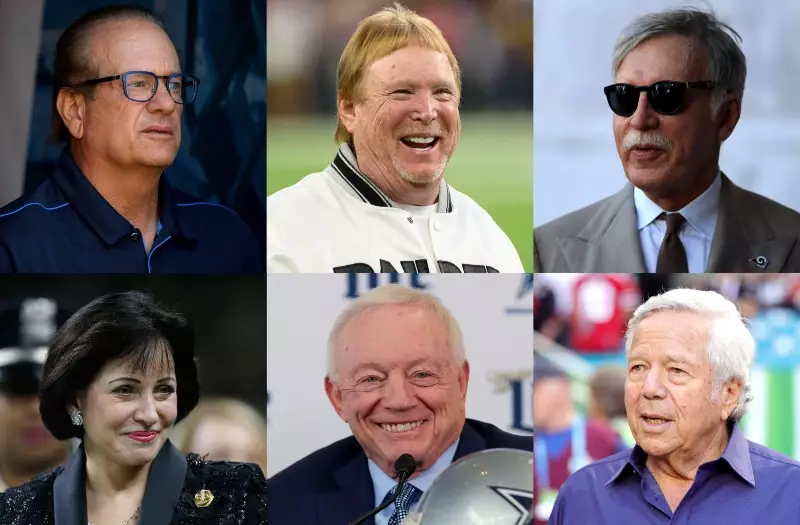Introduction
The National Football League (NFL) stands as a behemoth in the world of sports, not only for its unparalleled popularity but also for its massive financial success, with revenues surpassing $15 billion in 2020. As we delve into the fabric of the NFL in 2024, unraveling the complex ownership structure, we uncover the essence of the league, the pivotal role of the commissioner, and the diverse group of individuals and corporations that steer the helm of its 32 teams.
The Makeup of the NFL
The NFL comprises 32 teams, evenly distributed between the National Football Conference (NFC) and the American Football Conference (AFC). While the majority are owned by groups of individuals or corporations, a unique exception lies in the Green Bay Packers, owned by the community through a non-profit organization.
These teams engage in a rigorous 18-week regular season, striving to secure a coveted spot in the playoffs and, ultimately, the Super Bowl—the pinnacle of the NFL’s championship extravaganza.
The Commissioner’s Crucial Role
Headquartered in New York City, the NFL is under the stewardship of Commissioner Roger Goodell. Beyond donning the role of the league’s face, Goodell is tasked with the comprehensive management of the NFL. His responsibilities span from negotiating television contracts to enforcing league rules and regulations. Moreover, he holds the authority to discipline players, coaches, and other personnel for violations of the league’s policies.
Diverse Ownership Landscape
The ownership of NFL teams paints a diverse canvas, featuring both individuals and corporations. Some notable owners include Robert Kraft, the New England Patriots’ owner; Jerry Jones, helming the Dallas Cowboys; and Stephen Ross, presiding over the Miami Dolphins. The New York Giants stand out as a testament to family legacy, co-owned by the Mara and Tisch families since the team’s inception in 1925.
Beyond wealthy individuals, corporations also play a significant role in team ownership. Examples include the York family’s ownership of the San Francisco 49ers and Kim and Terry Pegula’s ownership of the Buffalo Bills.
Clarifying Misconceptions: Players and Ownership
Contrary to common misconceptions, players do not own the NFL. The league operates as a privately held business, with ownership vested in a select group of individuals and corporations. Players function as employees, compensated for their services through various means, including salary, bonuses, and other forms of compensation.
Unique Ownership Structure
The NFL’s ownership structure sets it apart from other professional sports leagues like the NBA, MLB, and NHL. It remains a privately held entity, shielding decision-making from the complexities of public shareholder approval. While this grants autonomy to team owners, it also means that the ownership details lack the transparency seen in publicly traded leagues.
The Titans of Wealth: Richest NFL Owners
The NFL is home to some of the world’s wealthiest individuals, with seven notable owners leading the financial charts. Topping the list is Stephen Ross of the Miami Dolphins, boasting a net worth of $7.6 billion. Others include Jerry Jones, Shahid Khan, Robert Kraft, Stan Kroenke, Arthur Blank, and Patricia Rooney, each with staggering fortunes derived from diverse business ventures.
The Intricacies of Becoming an NFL Team Owner
Becoming an NFL team owner is no small feat. It demands significant wealth, business acumen, and deep connections within the NFL community. The journey involves steps such as building substantial wealth, networking within the league, identifying teams for sale, forming a group of investors, making a compelling offer, and finally, securing approval from existing NFL owners.
Conclusion
In conclusion, the NFL’s captivating narrative extends beyond the gridiron, weaving a tale of diverse ownership, colossal wealth, and stringent entry into the elite club of team owners. As the league continues to be a powerhouse in the sports industry, the mystique surrounding its ownership adds another layer to its enduring legacy. The NFL’s ability to balance autonomy with collective success remains a testament to its unique position in the realm of professional sports.
FAQs
Q1: Who owns the NFL trademark?
The NFL trademark is owned by the National Football League (NFL) itself, a non-profit organization that governs the league. The NFL owns and controls the rights to the name and logo of the league, as well as the rights to all intellectual property associated with the league, including trademarks, logos, and other branding elements.
Q2: Is the NFL publicly owned?
No, the NFL is not publicly owned. The NFL is a privately held business, and the teams are owned by a diverse group of individuals and corporations. The league is not traded on public stock exchanges, and ownership stakes are not made available to the general public.
Q3: How does the NFL make money?
The NFL makes money through a variety of revenue streams, including television rights, ticket sales, merchandise sales, and sponsorship deals. The league also receives revenue from the sale of personal seat licenses and from hosting major events such as the Super Bowl.
Q4: Is the NFL a company?
The NFL is not a traditional company; it is a non-profit organization that governs the league. It is made up of 32 teams, each of which is owned by a group of individuals or corporations. The NFL’s main purpose is to govern and promote the league, and it makes money through a variety of revenue streams such as television rights, ticket sales, merchandise sales, and sponsorship deals.
Q5: Is the NFL worth more than NBA?
The NFL is considered to be worth more than the NBA, with the average NFL team valued at over $2 billion, compared to the average NBA team valued at around $1.9 billion. The NFL generates more revenue from television rights and sponsorship deals and has a larger fan base than the NBA.
